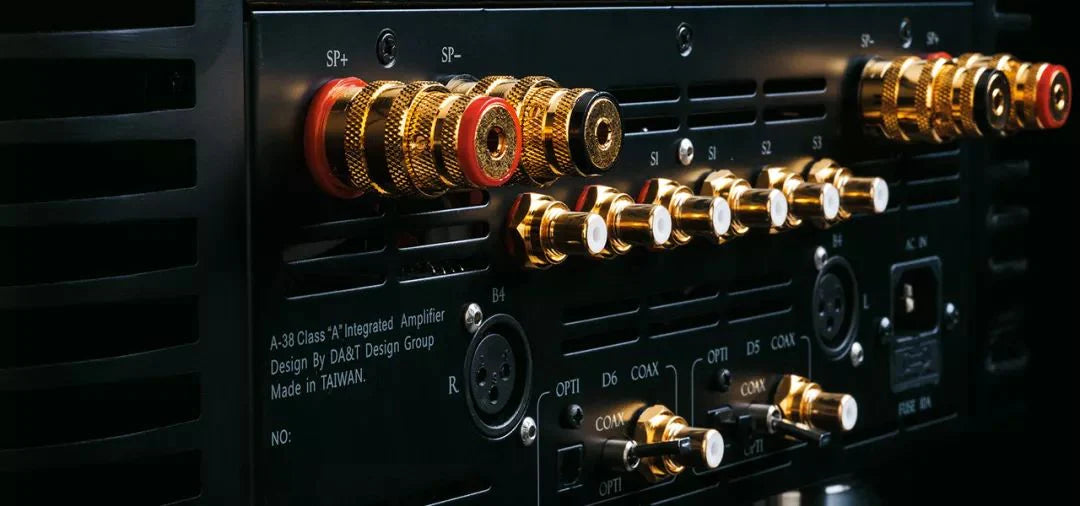
Why Is the Power Supply So Important for Amplifiers?
Share
The power supply of an amplifier is often underappreciated but plays an essential role in the overall performance and sound quality of the amplifier. While it's easy to focus solely on input signals and output power, overlooking the power supply's importance would be a mistake. A well-designed power supply is at the core of an amplifier's ability to reproduce sound with accuracy, clarity, and consistency.
How the Power Supply Impacts Amplifier Performance
The power supply delivers the stable and continuous voltage and current necessary for accurate signal amplification. During intense musical passages with high dynamic peaks, the power supply must respond swiftly to sudden demands. If the power supply is underpowered or unresponsive, it can lead to output distortion, diminished dynamic range, and compromised sound quality.
Example: Premium amplifiers from well-known brands like McIntosh, Accuphase, Krell, and Mark Levinson utilize robust power supplies to maintain exceptional performance, even during challenging music passages. Their substantial power reserves ensure consistent sound quality without distortion or noise under high demands. DA&T, though lesser-known on the international market, also excels in power supply design, offering stable power output and delivering high-level audio performance even during demanding dynamic passages.
The power supply dictates the amplifier's output limit
To understand an amplifier's mechanics, consider that transistors and vacuum tubes in amplifying circuits act as controllers or "valves" for energy flow, controlling the flow and consistency of energy; they don't create energy themselves. The power supply is the true source of amplified power.
Differences in the amplifying circuit can be likened to varying water flow rates, flow smoothness, or valve switching speeds. Just as a valve regulates water flow without creating it, amplifying circuits control and shape the electrical energy supplied by the power supply. However, these circuits merely transform the energy provided by the power supply into output in different ways. The output of an amplifier is fundamentally limited by the power supply’s capacity to deliver stable and sufficient voltage and current. This means that while other factors, such as circuit design and component quality, influence performance, the power supply ultimately sets the maximum power output the amplifier can achieve.
Why do lower ohm loads challenge an amplifier's output?
To understand the relationship between an amplifier and a speaker, we need to realize that speakers are passive components. They rely on the amplifier's voltage and current output to produce sound. Thus, connecting a challenging speaker to drive is like giving the amplifier a tough load. While a low-efficiency speaker can be considered challenging due to needing more power to achieve the same volume as a high-efficiency speaker, the more significant factor is the speaker's impedance fluctuations when playing music. Though speakers have a nominal impedance, their actual impedance varies with frequency. For instance, Speaker A with an impedance range between 7-9 ohms and Speaker B, which varies between 2-14 ohms, may both be labeled as 8 ohms. However, Speaker B can be more challenging due to its potential to drop to 2 ohms.
According to Ohm's law, when the voltage remains unchanged, a halved impedance will double the current. For an amplifier, the ability to maintain adequate current output when the speaker's impedance drops is crucial. This is even more important than the written specification of how many watts it can output at 8 ohms. For instance, if Speaker B's impedance drops to a low of 2 ohms during demanding music passages, the power consumption may quadruple. This presents a stern test for the amplifier. Some budget amplifiers might not be designed with a generous power supply, leading to a lack of power during these critical moments, causing subpar performance, less accurate representation of dynamics, reduced headroom, and narrower bandwidth – what's colloquially referred to as "weak sound."
How to know if an amp has a good power supply?
When assessing an amplifier, look beyond the rated power output and focus on specifications such as continuous and peak output at different impedance loads (e.g., 8 ohms, 4 ohms, 2 ohms). An amplifier that can maintain or nearly double its output power when the load impedance halves is likely equipped with a robust power supply. A very easy and intuitive way for identifying high-quality power supplies in amps.
Therefore, when choosing an amplifier, one shouldn't just look at fancy product title. It's essential to check the spec sheet and the actual power output at low impedances. For example, the K221 amplifier from DA&T Audio offers 150 watts at 8 ohms, 300 watts at 4 ohms, and 500 watts at 2 ohms, reflecting a strong power supply capable of sustaining demanding loads without distortion. In contrast, amplifiers that significantly drop in output power at lower impedances may not have the power supply capacity needed for challenging speakers.

DA&T K221 Class D and BTL Integrated Amplifier
Power Supply: The Backbone of Great Amplification
A robust power supply is the unsung hero of great sound quality in amplifiers. It ensures consistent energy delivery, reduces unwanted noise, and enables internal circuits to perform optimally. When choosing an amplifier, don’t overlook the power supply—it's what allows every other part of the amplifier to shine, making it an essential component of any serious audio system.
